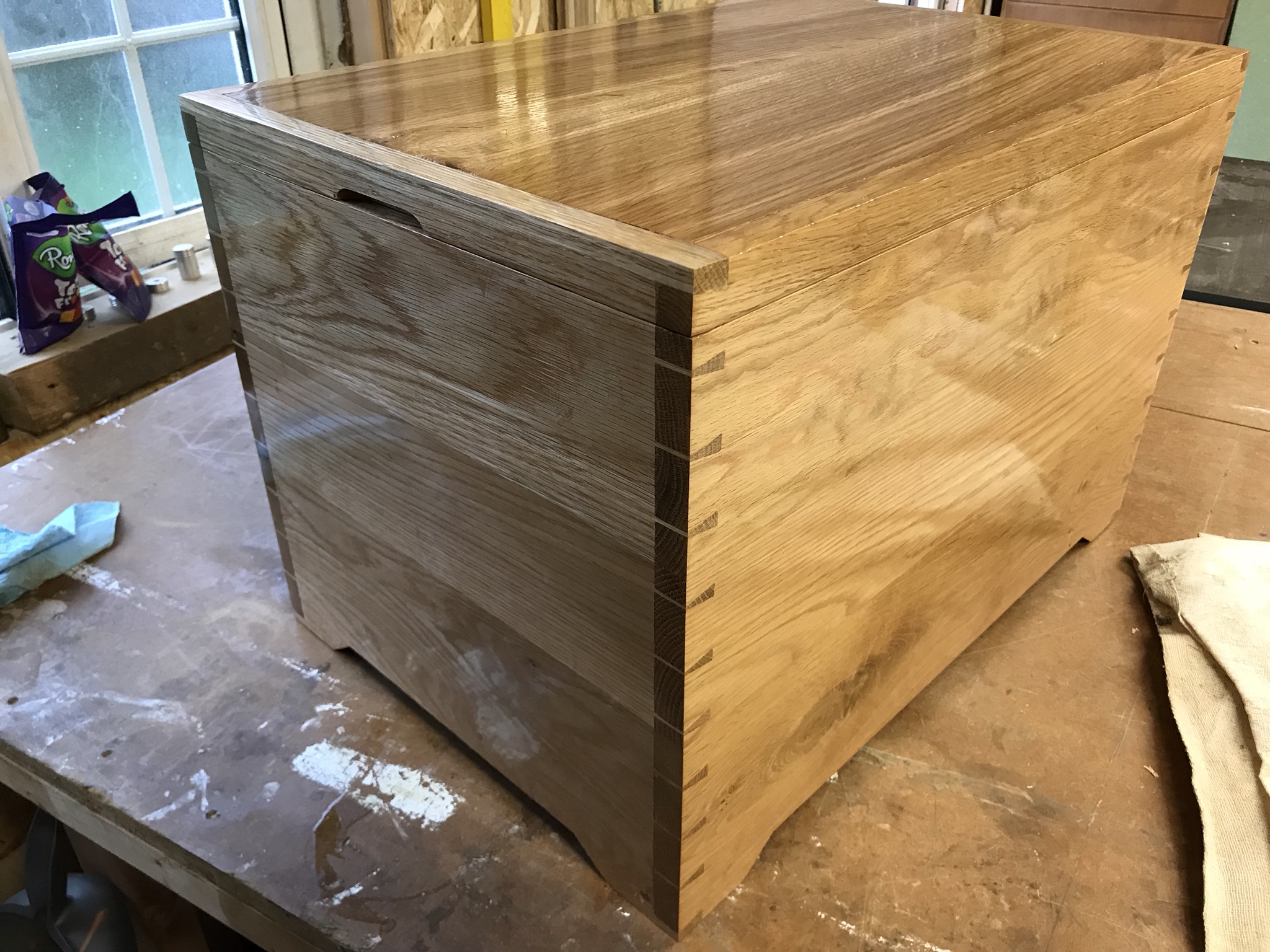Chris152
Established Member
Thanks Custard. The walls of my box are 8mm thick - what thickness do I leave in the walls to keep the box's structure before sawing by hand? is 1mm - 2mm ok?
That's a beautiful box - just to keep things in perspective, this is mine so far:

I'm making it mainly to try the variation on a donkey-ear mitre shooting board I just made for future boxes (the mitres looked pretty accurate to my eye, but now they're hidden inside the box!). I meant to rout a recess for the ply to sit into but in my excitement over glueing up the mitres I forgot, but I'm carrying on anyway for practice. There's a whole lot more skills to learn in making a box - and I've not even started hinges, veneers and all that.
Dr Bob/ Jacob - I don't have a table saw, so I'm planning to make the cut with a palm router in a table. I did the table a couple of weeks ago following Rorschasch's version and can't believe what a brilliant thing it is.
That's a beautiful box - just to keep things in perspective, this is mine so far:

I'm making it mainly to try the variation on a donkey-ear mitre shooting board I just made for future boxes (the mitres looked pretty accurate to my eye, but now they're hidden inside the box!). I meant to rout a recess for the ply to sit into but in my excitement over glueing up the mitres I forgot, but I'm carrying on anyway for practice. There's a whole lot more skills to learn in making a box - and I've not even started hinges, veneers and all that.
Dr Bob/ Jacob - I don't have a table saw, so I'm planning to make the cut with a palm router in a table. I did the table a couple of weeks ago following Rorschasch's version and can't believe what a brilliant thing it is.














































